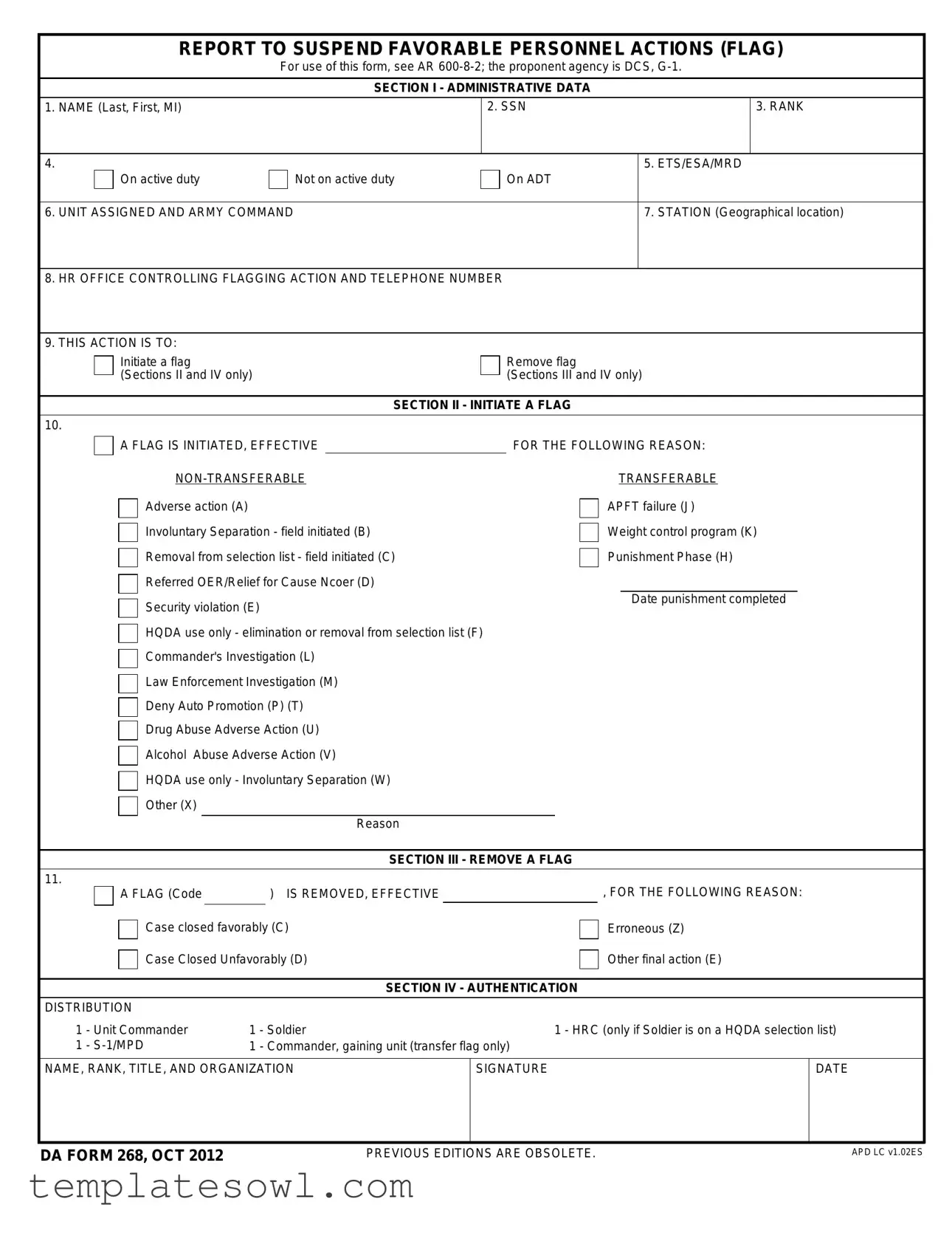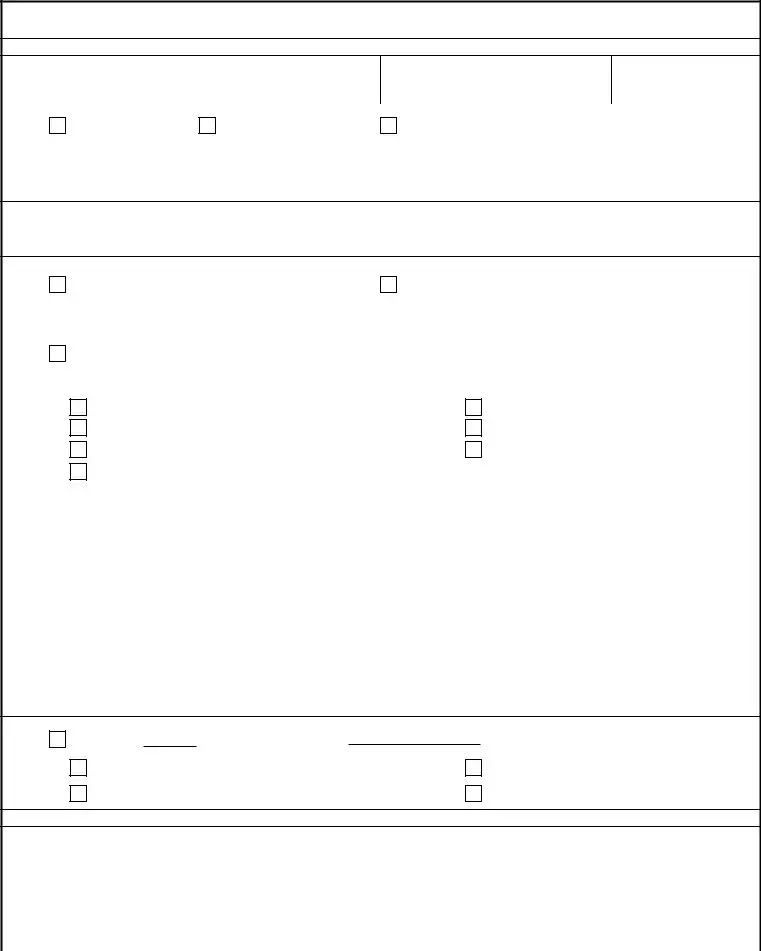What is the DA 268 form used for?
The DA 268 form is utilized to report and suspend favorable personnel actions within the military. This process is often referred to as “flagging.” It is important for maintaining personnel accountability, particularly during investigations, evaluations, or any other situations that might warrant administrative actions against a service member.
Who is responsible for completing the DA 268 form?
The form is typically filled out by a unit commander or a designated representative. They are responsible for providing accurate administrative data, initiating or removing flags, and ensuring proper distribution of the document to relevant parties.
What information is required to complete the DA 268 form?
Key information includes the individual's name, social security number, rank, and details regarding active duty status. Additionally, it requires information about the unit assignment, geographical location, and the specific HR office managing the flagging action. Accurate completion of this information is essential for processing the flag correctly.
What are the reasons for initiating a flag on the DA 268 form?
Flags can be initiated for various reasons, including adverse actions, failures in the Army Physical Fitness Test (APFT), drug or alcohol abuse violations, security violations, and removal from selection lists. Each reason is categorized as either transferable or non-transferable, which affects how the flag is managed within the personnel system.
How can a flag be removed using the DA 268 form?
To remove a flag, the appropriate section of the DA 268 form must be completed, indicating the reason for removal. Common reasons include favorable closure of a case, unfavorable closure of a case, or if the flag was deemed erroneous. The form must be signed and dated to authenticate the removal process.
What is the process for distributing the DA 268 form?
The completed form must be distributed to several key individuals and entities. This includes the unit commander, the soldier involved, the Human Resources Command (HRC) if the soldier is on a selection list, the S-1 section, and the commander of the gaining unit if applicable. Proper distribution is critical to ensure all parties are informed of the flagging status.
Is there a time limit for initiating or removing a flag with the DA 268 form?
While specific time limits may depend on the situation and detailed guidance provided by AR 600-8-2, it is generally advisable to initiate or remove flags promptly to maintain personnel integrity and morale. Delays can impact a soldier's career progression and administrative standing.
What should be done if there is an error in the DA 268 form?
If an error occurs on the DA 268 form, it should be corrected as soon as possible. The responsible personnel must ensure that the corrections are documented and that the affected parties are notified. If a flag was erroneously initiated, it may need to be removed by following the established procedures for flag removal.

